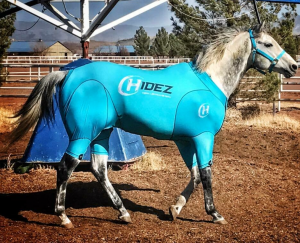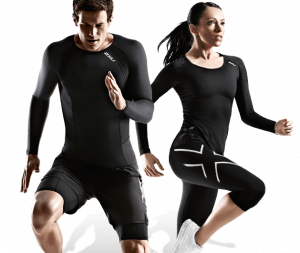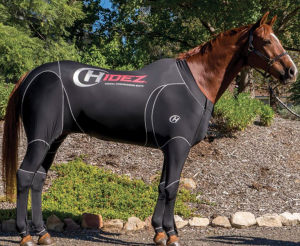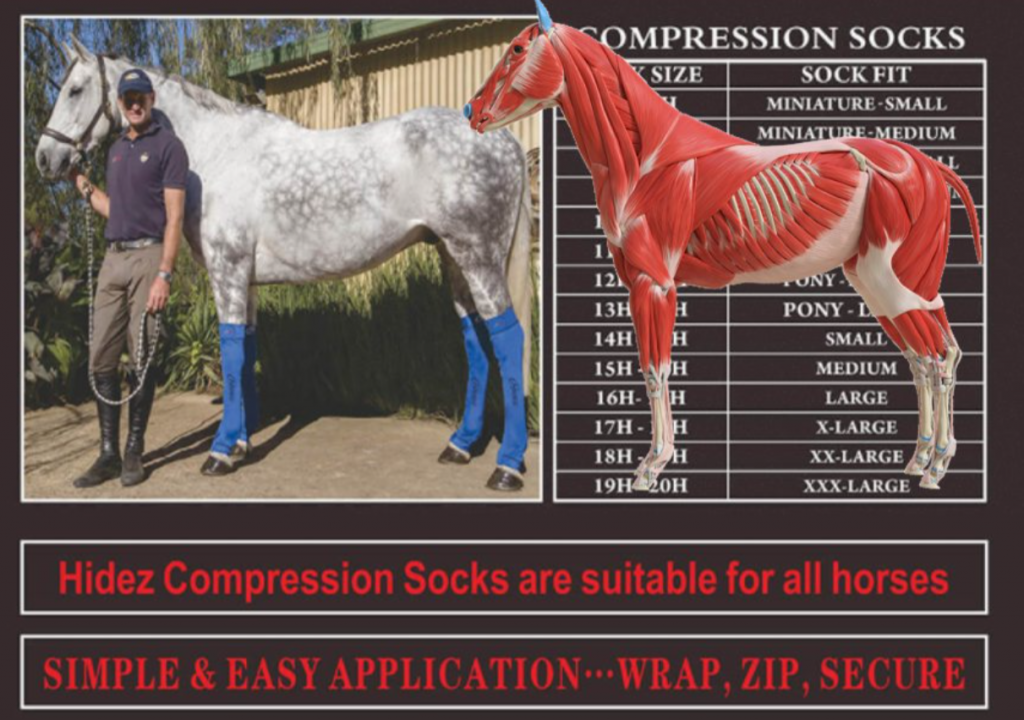 Editor’s Note:
Editor’s Note:
We hear from Dr. Sheryl King, the 2021 Keynote Speaker at the Best Horse Practices Summit. King is professor emeritus of Southern Illinois University and one of the most popular presenters at the inaugural Summit. Dr. King was elected a Fellow of the Equine Science Society in 2009, an Associate in the Fifty Year Horse Society, an SIU Outstanding Scholar and Faculty Service Award recipient. She has authored many scientific research publications as well as general horse articles and has spoken on horse management topics on five continents.
Dr. King writes:
It Works Best If You Believe It Works
The equine compression suit is the newest clothing trend for horses-on-the-go. The uber-stretchy, custom fitted, full body condom for horses was modeled after those used in human athletics. Like so many products on the equine marketplace claiming to improve life for our horses, these suits fall into the categories of Unproven, Scientifically Inaccurate, and possibly Dangerous.
 Makers of the equine compression suit claim it will “minimize muscle fatigue and soreness by helping to remove lactic acid and therefore lowering the likelihood of tying up.” While a scattering of human studies suggested improved lactic acid clearance using compression following intensive exercise, far more studies report either no effect or, in the case of one study, a reverse effect. Not only is there no research on compression-assisted lactic acid clearance in the horse, the science is faulty. While the build-up of lactic acid in hard working anaerobic muscles is certainly a cause of muscular fatigue, more than two decades of research into the far more crippling and even life-threatening problem of tying-up (exertional rhabdomyolysis) in horses has shown no role for lactic acid accumulation as its cause.
Makers of the equine compression suit claim it will “minimize muscle fatigue and soreness by helping to remove lactic acid and therefore lowering the likelihood of tying up.” While a scattering of human studies suggested improved lactic acid clearance using compression following intensive exercise, far more studies report either no effect or, in the case of one study, a reverse effect. Not only is there no research on compression-assisted lactic acid clearance in the horse, the science is faulty. While the build-up of lactic acid in hard working anaerobic muscles is certainly a cause of muscular fatigue, more than two decades of research into the far more crippling and even life-threatening problem of tying-up (exertional rhabdomyolysis) in horses has shown no role for lactic acid accumulation as its cause.
Even a custom fitted suit cannot prevent what does not occur.
 Intermittent tying-up has been reported to occur as a secondary response to hyperthermia (overheating), particularly when an unfit horse is overworked. Anything that would interfere with heat dissipation could exacerbate this. The makers of the equine compression suit recommend its use only for pre-and post-exercise – a sensible caveat, since heat dissipation during exercise is a supremely important part of equine exercise physiology, and any covering over the horse’s skin and natural coat will necessarily interfere with that process. Even if you could manage to stretch a full body stocking onto a sweaty horse immediately after exercise (Good Luck), it would certainly, and perhaps dangerously, limit cooling — moisture-wicking material or no. It’s interesting that the manufacturers of the equine compression suit send conflicting messages about its appropriate use by depicting horses wearing their products during exercise.
Intermittent tying-up has been reported to occur as a secondary response to hyperthermia (overheating), particularly when an unfit horse is overworked. Anything that would interfere with heat dissipation could exacerbate this. The makers of the equine compression suit recommend its use only for pre-and post-exercise – a sensible caveat, since heat dissipation during exercise is a supremely important part of equine exercise physiology, and any covering over the horse’s skin and natural coat will necessarily interfere with that process. Even if you could manage to stretch a full body stocking onto a sweaty horse immediately after exercise (Good Luck), it would certainly, and perhaps dangerously, limit cooling — moisture-wicking material or no. It’s interesting that the manufacturers of the equine compression suit send conflicting messages about its appropriate use by depicting horses wearing their products during exercise.
 Athletic compression garments are utilized in human athletics with the belief that they can help improve muscular circulation and/or muscular contractile force. Since the compression suit is contraindicated during actual athletic performance in horses, the theoretical exercise-enhancing (ergogenic) effect of improved muscle contractile force is moot (It mostly doesn’t work in human athletes, anyway).
Athletic compression garments are utilized in human athletics with the belief that they can help improve muscular circulation and/or muscular contractile force. Since the compression suit is contraindicated during actual athletic performance in horses, the theoretical exercise-enhancing (ergogenic) effect of improved muscle contractile force is moot (It mostly doesn’t work in human athletes, anyway).
However, for those equine competitors convinced that application of lower leg compression garments may provide added tendon support, be aware that research confirms dangerous heat buildup beneath various types of sports boots specifically designed for exercise in horses. That heat is sufficient to break down collagen fibers in the very tendons these boots and wraps seek to protect.
Could lower leg compression garments for horses have similar side-effects? There are no studies to guide us.
Wearing a compression garment while at rest, with claims to increase blood flow to the muscles, “…allowing more red and white blood cells, oxygen, vitamins and minerals to reach each muscle, ensuring the warming up of the muscles prior to competition without increasing the core temperature…”
Dear Horse Owner, please note:

No muscles under those compression leggings!
Sluggish venous drainage may be assisted through graduated external compression- although human studies of this effect are conflicting – but veins carry deoxygenated blood, CO2 and wastes away from tissues. Assisting venous circulation through graduated compression may provide a positive effect, but it will hardly act to deliver anything to working tissues. As to the control of arterial blood supply carrying oxygenated blood and nutrients into muscles – the body constantly monitors itself, apportioning the limited resource of blood flow appropriately. Not every bodily tissue is perfectly perfused at any one period of time.
In an animal at rest, many vascular beds to voluntary muscles are closed. In order to demand a larger share of the blood supply, a muscle has to contract – perform work. This is probably the physiological explanation for why the most recent research in human athletes reports no increase or sometimes an actual decrease in muscular blood flow using compression during and after exercise. There are no studies in horses.
Although a few studies in horses indicate that properly applied, graduated compression of the lower limbs may limit stocking up (passive edema), the effectiveness of this particular product in combatting puffy legs due to injury or immobility has not been published. Simple leg wrapping has often been cited as counterproductive and occasionally catastrophically damaging to horses. In most cases, the safest and best foil to stocking up is movement. Just. Walk. Motion is Lotion.
Can whole body compression assist an anxious horse? Although there is no scientific data to support or refute this in horses, there are a scattering of studies indicating that Deep Pressure Therapy can help some humans dealing with anxieties. After witnessing the change in behavior of cattle in squeeze chutes, Dr. Temple Grandin created her own version of the “human hug machine” that reportedly helped her deal with anxiety associated with her autism. A physical compression method that applies 20 minutes of sustained pressure to the thorax of newborn foals with Neonatal Maladjustment Syndrome (Dummy Foals) sometimes rapidly hastens their recovery.
Thundershirts are marketed for dogs, weighted blankets for humans.
Does compression work?
Testimonials tell us Yes. But science also warns us that “things work best when you believe that they work.”
The placebo effect can be a very powerful force in humans –it allows humans to feel different when a sham treatment is applied to themselves. When owners have invested in treatments said to offer relief to animals, the placebo effect can trick us into seeing a change in their behaviors. Owner-perception studies are notoriously difficult to construct to eliminate bias. Hence the invention of the double-blind study method. In the end, at many hundreds of dollars per garment, a compression suit seems an expensive alternative to the intimate work of observation and environmental/behavioral modification to affect a more permanent change in our horses’ behaviors.
Of all the claims made for the equine compression suit, there are two that can be easily and empirically proven (in the interest of full disclosure, this constitutes conjecture on my part – I could locate no confirming studies):
— Maintains a great looking coat
— Helps reduce insect bites.
I can think of far less expensive methods of attaining these two goals.
In the final analysis, for those with spare hundreds to spend on a statement outfit for your horse: Buy this whole body slinky in whatever color and pattern suits your taste with no expectation that it will do more than simply clothe your horse (who does not need to be clothed) and you shouldn’t be disappointed.
Dr. David Marlin recently commented on a similarly flagrantly-false advertising post for LED leg wraps. For those without a working knowledge of equine anatomy, horses do not have muscles below the knees or hocks (see equine musculature diagram overlaid on the chart above). You cannot speed healing in a tissue that does not exist.
Fact-checking electronic information has become critical. Knowing where to go to verify information is an important tool. Popular, open-access search engines are purveyors of constructed content, not necessarily truth.
If you are trying to fact check non-technical social media assertions, always consult more than one source.
Try several of these: factcheck.org, snopes.com, politifact.com, mediabiasfactcheck.com, fullfact.org, truthorfiction.com, flackcheck.org, semanticscholar.org, reuters.com, leadstories.com.
If you are trying to fact check academic or scientific information, consult one or more of these suggested sources: Google Scholar (google.scholar.com), Pub Med (pubmed.ncbi.nim.nih.gov), CiteSeerx(citeseerx.ist.psu.edu), Research Gate (researchgate.com), Academic Research (academic.research.microsoft.com/), BioLine (bioline.org.br), PLOS ONE (plosone.org), ScienceDirect (sciencedirect.com/), SSRN (ssrn.com), AGRICOLA (agicola.nal.usda.gov/), CAB Direct (cabdirect.org).
THANK YOU!!!!!!!!!!!!!!!!!!!!!!!!!!!!
AMEN!!!!!!!!!!!!!!!!!!!!!!!!!!!!!!!!!!!
Ah, Dr. King-master debunker! Thanks for including the info on anti-anxiety and other nervous systems effects of compression, whole different thing.
Lactic acid and lactic acidosis sound so scientific. Lactic acid and lactic acid “crystals” has been blamed for a plethora of things since probably before I started in the world of bodywork and exercise physiology thirty five years ago. Who hasn’t heard a newbie massage therapist say, “We’ve got to get that lactic acid out of there!” as they rub furiously on one’s leg.
As you mention, MOVEMENT post exercise is the best initiator of venous return. And lactic acid is actually required for heart function so we don’t want to totally “get rid of it.” Massage would be my next go to as we do have studies about direct manual therapy improving venous return (why counter indicated in thrombosis). So a post exercise cool down and old fashioned rub down with lineament (or not) as well as cold hosing would probably be more effective as well as not just sticking one’s horse back in a stall or trailer. As always simple hands on modalities that anyone can do are overlooked and under rated.
Catherine – ordinary horse person
Thank you many many times. Both for the info on compression garment and on the fact checking sites.
Thanks,
SO many people duped by the marketing of horse products and so little reality-testing!
Truly appreciate knowing the science that is NOT behind most of it. We really need this information to move forward…and easier access to it is long overdue.
Appreciate Dr. King!
What may work well for humans does not necessarily mean it will work well for horses. As a trainer who despises the many forms of artifice used on horses, I am also not impressed by magnets. Unfortunately the horse world is repleat with gimmicks and gadgets that are either useless, or in some cases downright harmful. My rule of thumb is that if I wouldn’t want that applied to me, chances are my horse won’t either. I always consult my vet and shoer, and just apply good old fashioned horse sense.